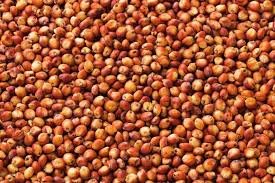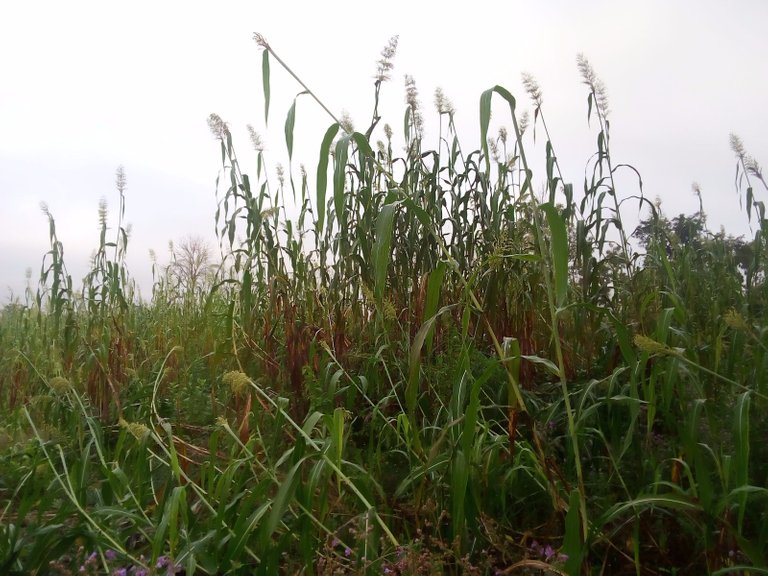
Having being a graduate of agriculture and a practical farmer for many years now, there are so many amazing crop plants with, and around me, but this particular one, for a number of reasons, is what I call my 'sweetgum', that is, my hot favorite.
You might be wondering at this point, what is so special about this ordinary cereal crop? Well, to me, it's not ordinary, to me, it's very much special, cos with it, I make my favorite food. It might interest you to know about my favorite food, but, for the sake of time and space, I'll beg to leave that for another day... 🤓
Let's just focus on sorghum today, its production procedures and a few of its uses. Are you ready to journey with me? I'm hoping I can teach you something new... 😂
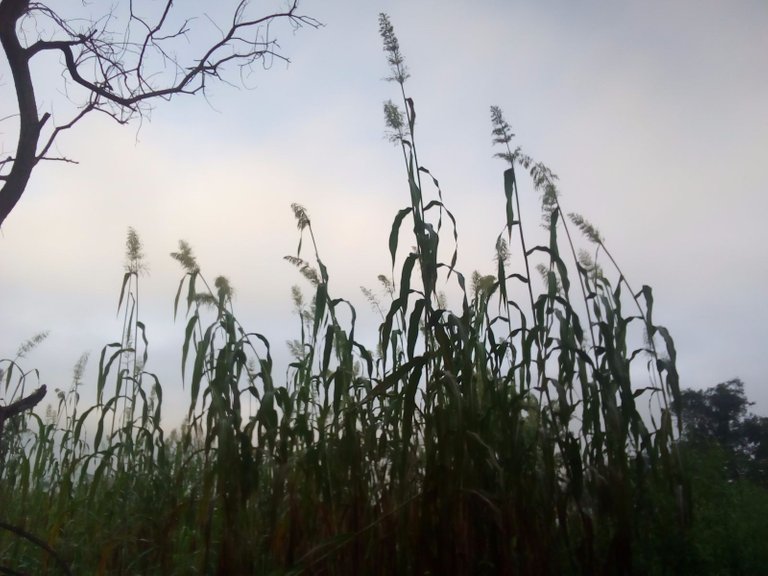
Sorghum is quite important to us in this part of the world, being one of the richest, cheapest and most readily available sources of carbohydrates. Its crude protein content is a little higher than that of maize, making it a better alternative. It also has a wider range of uses than most of the other cereals and the yield of it isn't bad either.
Let's go to the field! If you want to produce your own guinea corn, the first thing you will need to do is site selection.
Select a well aerated sandy-loam soil, that is moderately rich in humus: sorghum requires a little less soil nutrients than maize.
Land Preparation
After site selection comes land preparation. This refers to the clearing of the land, which may include the removal or killing of tress and cutting of grasses. After this, tillage (the making of ridges) can be done, but in areas with loose soils, that is, soils not compacted, zero tillage can be employed. Zero tillage involves the sowing of seeds on an uncultivated land, by making little holes, with a cutlass, in which the seeds are dropped and we'll covered. That's the method we are using here. It saves lot of labour and cost, but when done on a compacted soil, the result may not be encouraging.
Seed Sowing
After land preparation comes seed sowing. 6-8 seeds are sown per stand, which may later be thinned to 4. A spacing of 60cm or there about should suffice.
Thinning
Thinning is done to reduce plants population and increase your crop's vigour. It is done at about a month after sowing, when the sorghum plant is about 30cm tall. You can also transplant the ones you removed to other fields.
Weeding
Weeding, which is removal of grasses should be done at about 3-4 weeks after sowing and again at about 2 months after sowing. Chemical or mechanical means can be employed to get this done. We use chemicals for wedding, particularly paraquat dichloride, a contact herbicide. What's next after weeding...?? I think you should be getting ready for bumper harvest 🤓🤓💪

Flowering occurs here around late October, irrespective of the time of sowing and the crop is ready for harvest in December when Christmas is knocking at my door... 🤓
Harvesting
Harvesting of sorghum can be quite hectic, due to its tall nature. The stalk has to be brought to your level by bending it with the hand, but some people prefer cutting it down. The heads, containing the fruits of your labour are then cut off with a knife or a sickle. After gathering the heads and tying up into shieves, they are left to dry up very well, before being brought into the barns.
Threshing
Locally, we thresh sorghum by beating the hell out of it with sticks, but there are threshing machines around to help you get the 'stubborn boys out of their mother's wombs' (a process I personally call "sorghum abortion")😂🤓😂
Winnowing
This refers to the removal of the chaff from the grains. We solely rely on the breath of God (wind) for this practice, but I'm sure you can employ some man made fans to help you, and I believe that will be more predictable than the breath of God that I use... 😍
Now, what's next? YoUSES of sorghum:
Here in Nigeria, sorghum has a lot of uses. I'll tell you only but a few... 🤓
- Ogi (pap)
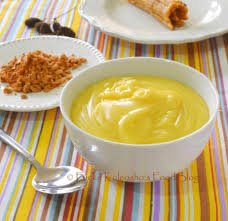
image source
The favorite breakfast of many Nigerian families. It is produced by soaking sorghum in water for a couple of days, after which it milled and we'll sieved. The resulting fine paste is then boiled for a few minutes. Add sugar, milk or whatever... 🙈
- Guinea corn cake:
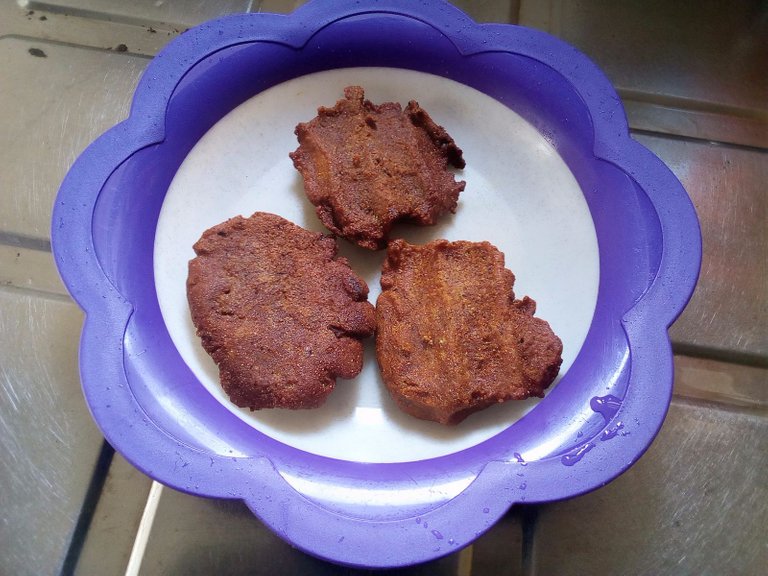
Hmm! Not many people knows this. It's one of my favorites. It is made by milling dry guinea corn, mixing with a little water, add all desired ingredients to the semi wet paste. Put your oil on fire. Press a small quantity of paste with your fingers, and drop in your hot oil... Puff! Then comes something really good. Make sure to fry dry, it's sweeter that way.
Other uses: Amala, Burukutu (locally made beer) etc...
With all that has been said about sorghum, I hope you would consider planting some some in the coming season.
From the staples of your AgroFriend @christiana-j😀😀🤓
Do have a wonderful weekend. And please do remember to encourage this 'agroaddict' with an upvote.
God bless you real good.
